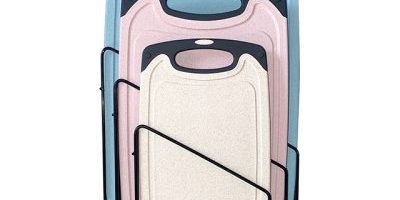Plastic cutting boards have been a staple in kitchens for decades, but there’s often confusion about their safety, especially concerning foodborne pathogens. In this article, we will explore the science behind plastic cutting boards and whether they are a safe and hygienic choice for your kitchen.
- Non-Porous Surface: Plastic cutting boards are typically made from high-density polyethylene (HDPE), which has a non-porous surface. This property means that it is less likely to absorb moisture or harbor bacteria compared to other materials.
- Ease of Cleaning: Plastic cutting boards are easy to clean and sanitize. Their smooth, non-porous surface allows for efficient removal of food residues and bacteria during washing.
- Resistance to Knife Marks: While plastic boards can develop knife marks over time, they are less prone to deep gouges that can trap bacteria compared to some other materials like wood.
- Dishwasher-Friendly: Many plastic cutting boards are dishwasher-safe, allowing for thorough and high-temperature cleaning, which is effective in killing bacteria.
- Color Coding: Some professional kitchens use color-coded plastic cutting boards to prevent cross-contamination. Assigning specific colors to different food groups helps maintain food safety.
- Regular Replacements: To ensure food safety, it’s advisable to replace plastic cutting boards periodically, especially if they show signs of excessive wear or deep cuts.
- Maintaining Hygiene: Regardless of the cutting board material, proper hygiene practices, such as regular cleaning and sanitizing, play a crucial role in preventing foodborne illnesses.
- Usage Guidelines: Plastic cutting boards are best suited for cutting vegetables, fruits, and cooked meats. Using separate boards for raw meats and ready-to-eat foods is a recommended practice.
- Thorough Cleaning: Pay extra attention to cleaning the edges and corners of plastic cutting boards, as these areas can trap food particles and bacteria.
- Overall Safety: When used and maintained correctly, plastic cutting boards are generally considered safe for food preparation. However, like any cutting board material, they require regular cleaning and replacement when necessary to ensure food safety.
In conclusion, plastic cutting boards can be a safe and hygienic choice for your kitchen when used and maintained correctly. Their non-porous surface, ease of cleaning, and resistance to deep knife marks contribute to their suitability for food preparation. However, it’s essential to practice proper hygiene and replace worn or damaged plastic cutting boards to ensure food safety.






